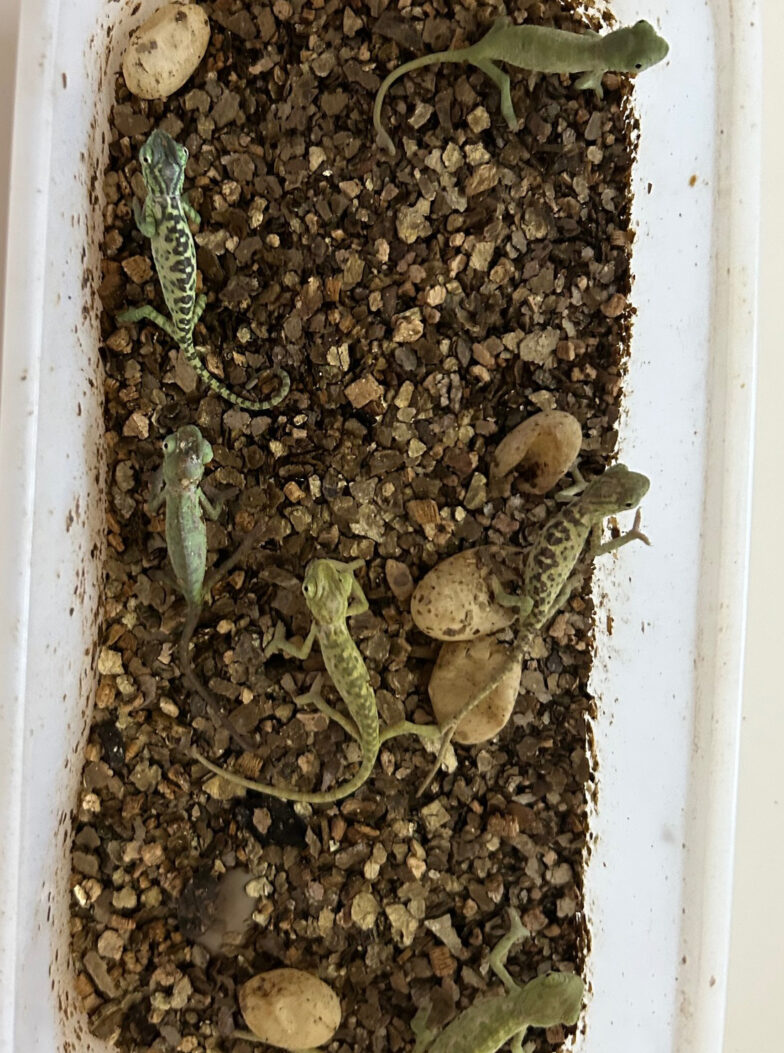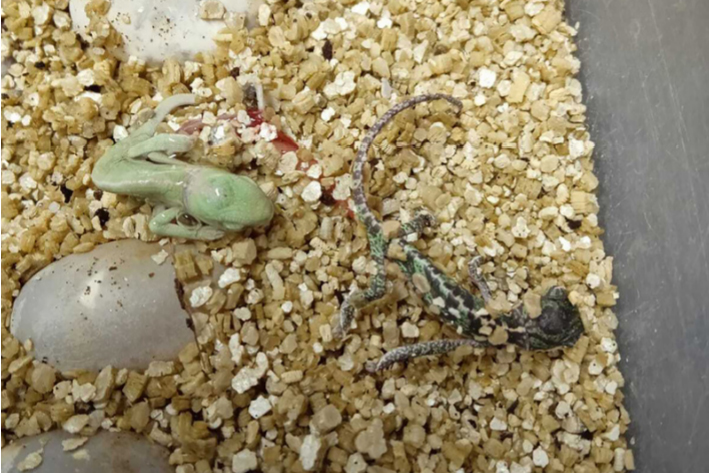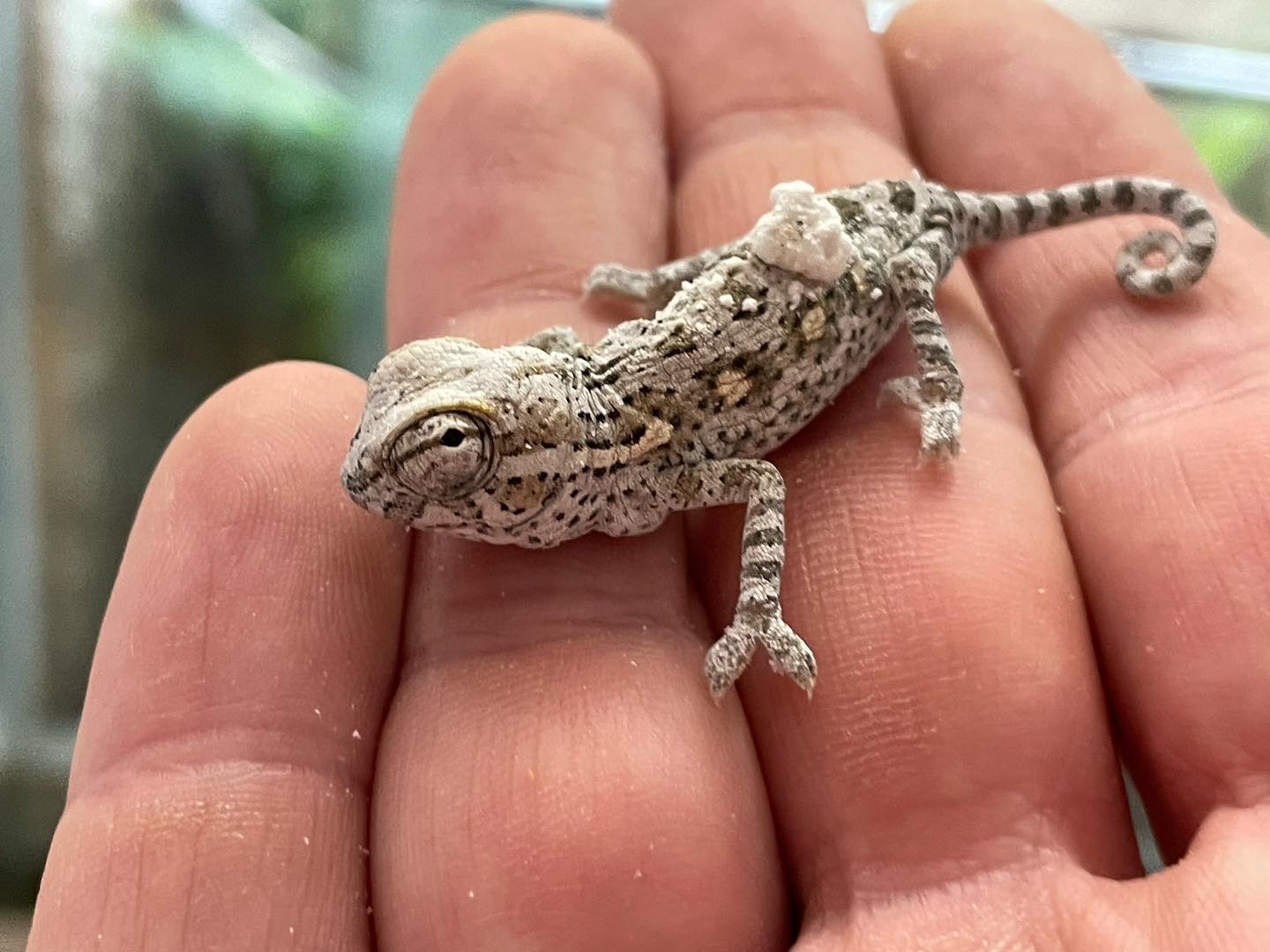AG member David Prötzel has successfully incubated and hatched a clutch of Furcifer viridis. Congratulations!
Furcifer viridis is a small species of chameleon found in western Madagascar. It was long thought that the species belonged to the carpet chameleon Furcifer lateralis – but since 2012 it has been clear that it is a separate species. David incubated the eggs for around 50 days at 20-22°C (room temperature), then a further 50 days at 24-25°C in an incubator. From day 100 until hatching, the eggs were at 28 to 29°C. The total incubation period was 142 days. David used fine vermiculite as a substrate, which was moistened once.






